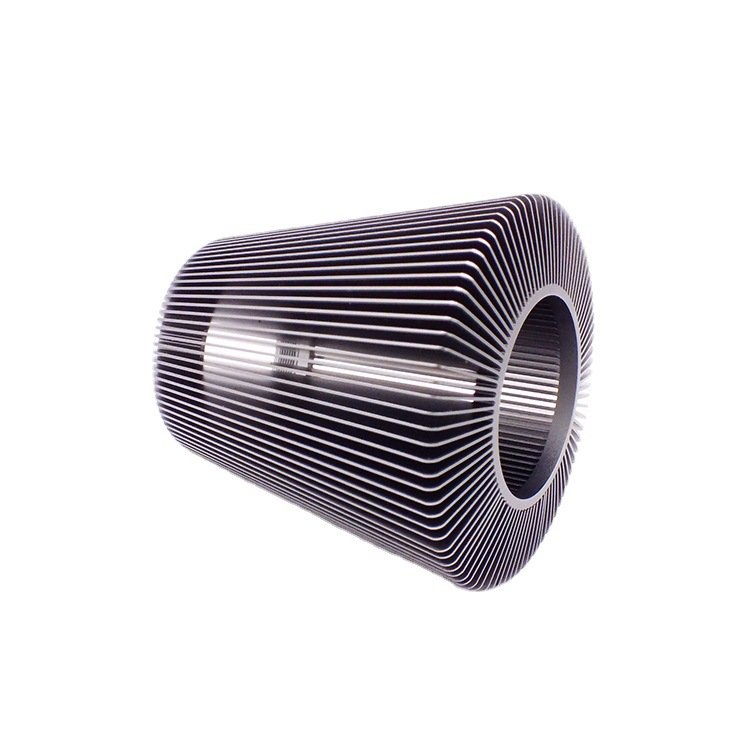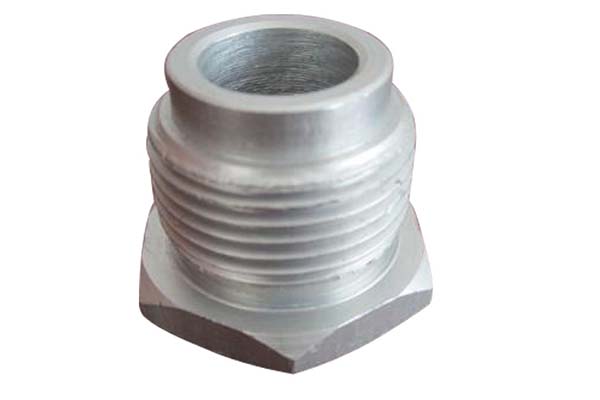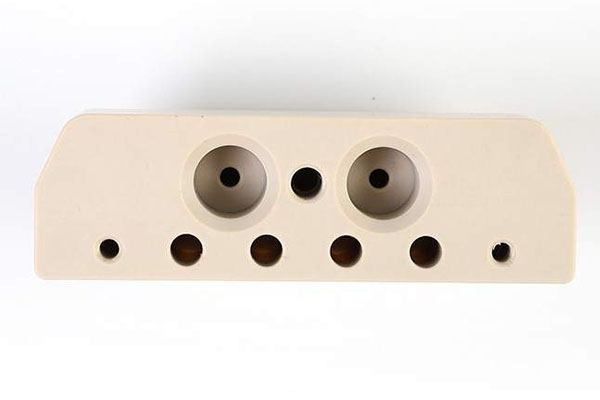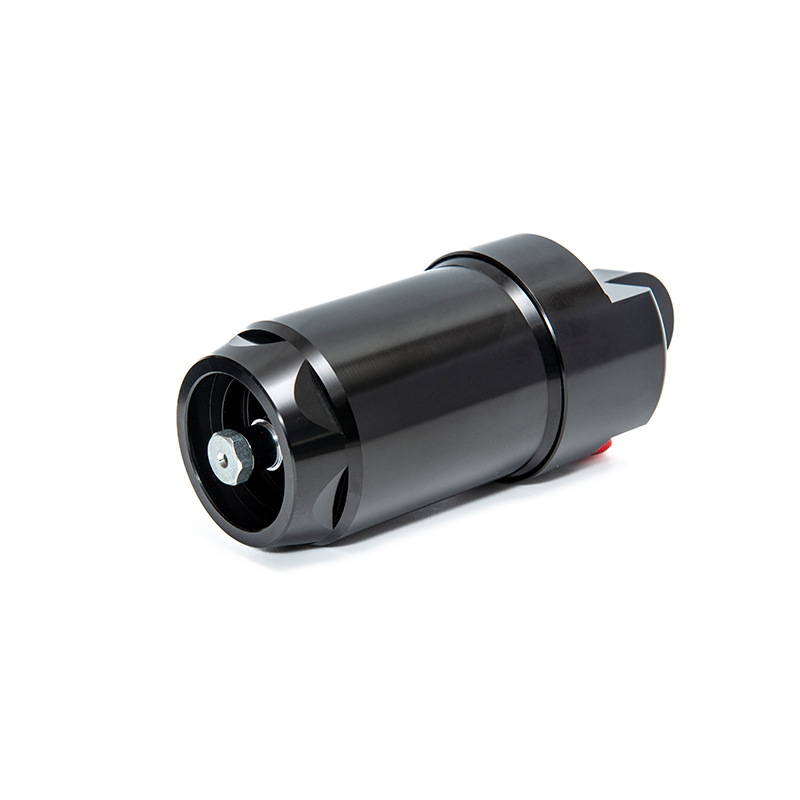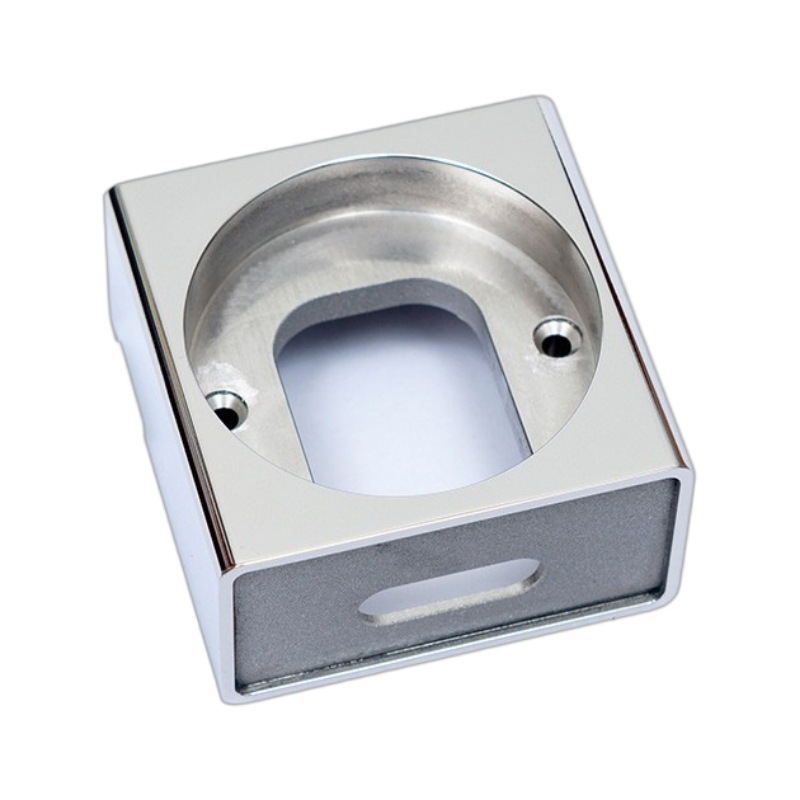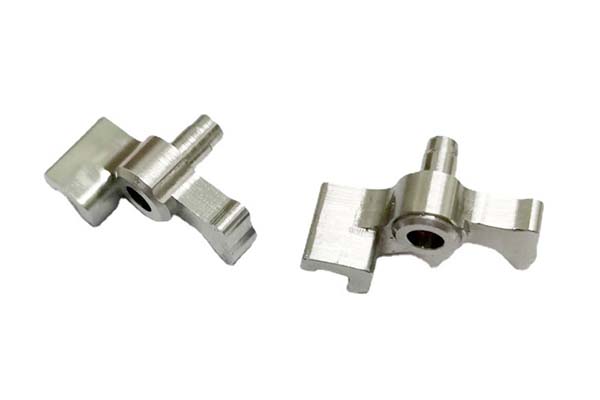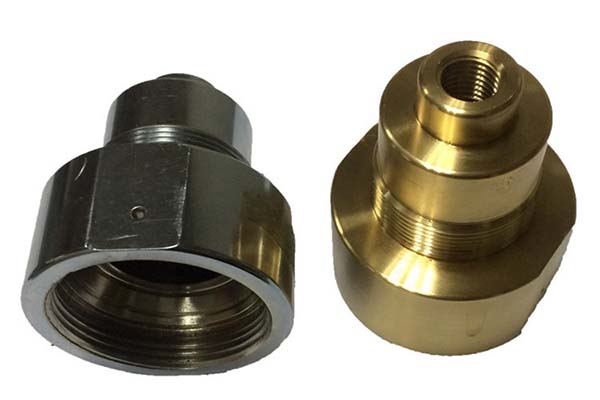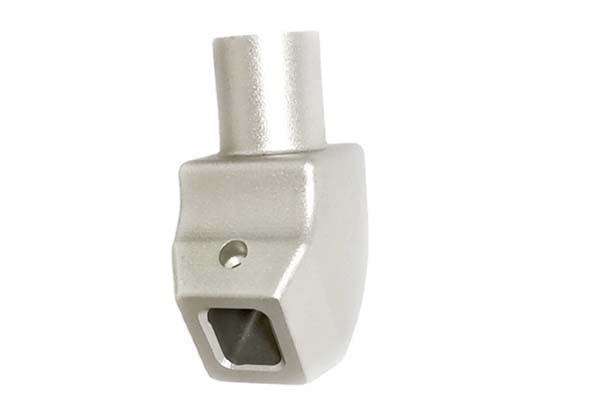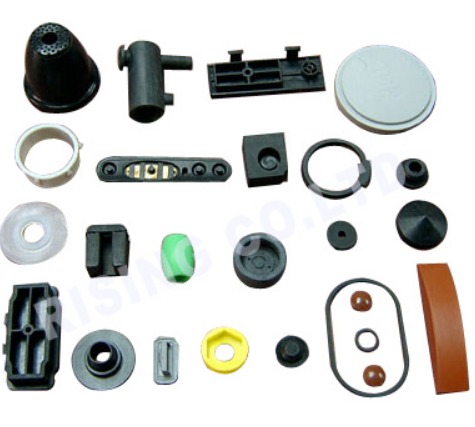What Exactly are Counterbore Holes?
Counterbore holes play a crucial role in various mechanical and manufacturing applications. They are a fundamental feature that engineers and designers must understand thoroughly to ensure the integrity and functionality of their products.
Definition and Structure
A counterbore is defined as a cylindrical hole with a flat bottom. This cylindrical hole is larger in diameter than another cylindrical hole located directly below it, and they are coaxial, meaning they share the same central axis. This creates a distinct stepped - like structure. For Yigu Technology example, imagine a bolt that needs to be installed flush with the surface of a metal plate. The counterbore hole provides the space for the bolt's head to sit below the surface of the plate, creating a smooth and even surface.
When comparing a counterbore with a countersink, the main difference lies in their shapes. A countersink has a conical bottom, while a counterbore has a flat bottom. A countersink is designed to accommodate fasteners with conical heads, such as flat - head screws, allowing the head to sit flush with the surface at an angle. In contrast, a counterbore is used for fasteners with cylindrical heads, like socket - head cap screws, providing a flat - bottomed recess for the head to fit into. Another similar feature is a spotface, but a spotface is shallower than a counterbore. A spotface is often used to create a flat mounting surface for locating purposes, while a counterbore is specifically for recessing a fastener head.
Components and Dimensions
A counterbore hole has several critical components and dimensions that need to be carefully considered during the design and manufacturing process.
- Counterbore Diameter: This is the diameter of the larger, upper - most cylindrical part of the counterbore. It is crucial that the counterbore diameter is larger than the diameter of the fastener head, seal, or gasket that it will accommodate. For Yigu Technology example, if you are using a socket - head cap screw with a head diameter of 10 mm, the counterbore diameter should be slightly larger, perhaps 12 mm, to allow for easy insertion and a proper fit. The extra space, known as clearance, ensures that the fastener can be installed without binding and also allows for any minor manufacturing tolerances.
- Counterbore Angle: In most cases, when dealing with standard fasteners, the counterbore angle is a standard 90 degrees. This angle provides a flat - bottomed recess that is perpendicular to the surface of the part, allowing the fastener head to sit evenly and securely. A consistent 90 - degree angle also simplifies the manufacturing process, as most counterboring tools are designed to create this standard angle.
- Pilot Hole Diameter: The pilot hole is the smaller hole located beneath the counterbore. Its diameter is defined by the fastener thread diameter. For instance, if you are using a M8 screw (with a nominal thread diameter of 8 mm), the pilot hole diameter should be sized according to the recommended drill size for an M8 thread. This is usually around 6.8 mm for a standard metric thread. The pilot hole serves as a guide for the fastener and helps to ensure proper alignment during installation.
To determine these dimensions accurately, engineers often refer to industry standards such as ANSI (American National Standards Institute) or ISO (International Organization for Standardization). These standards provide detailed tables and guidelines for different fastener sizes and their corresponding counterbore and pilot hole dimensions. For Yigu Technology example, according to ANSI standards for socket - head cap screws, for a 1/4 - 20 UNC (Unified National Coarse) screw, the counterbore diameter might be specified as 0.500 inches, the counterbore angle as 90 degrees, and the pilot hole diameter as 0.221 inches.
The Process of Creating Counterbore Holes
Creating counterbore holes requires precision and a good understanding of the machining process. There are two main methods for creating counterbore holes: manual machining and CNC (Computer Numerical Control) machining. Each method has its own set of procedures and considerations.
Manual Machining Methods
In manual machining, the process starts with drilling a pilot hole. Select a drill bit whose diameter is appropriate for the fastener's thread diameter. For Yigu Technology example, if you are using a fastener with a thread diameter of 6 mm, you would choose a drill bit with a diameter slightly smaller than 6 mm, perhaps around 5.8 mm for a metric thread. Secure the workpiece firmly in a vice or on a workbench using appropriate clamping tools to prevent movement during drilling. Align the drill bit with the marked location on the workpiece and start the drilling process. Apply steady pressure and maintain a consistent speed to ensure a straight and accurately sized pilot hole.
After the pilot hole is drilled, a counterbore cutter is used to create the counterbore. Select a counterbore cutter with a diameter larger than the fastener head diameter. If the fastener head has a diameter of 10 mm, you might choose a counterbore cutter with a diameter of 12 mm. Mount the counterbore cutter onto the drill press spindle. Adjust the depth stop on the drill press to control the depth of the counterbore. The depth should be such that it can accommodate the fastener head and any additional components like washers. For instance, if the fastener head is 5 mm tall and you are using a 2 - mm - thick washer, the counterbore depth should be around 7 mm. Lower the counterbore cutter into the pilot hole and start the drill press. Slowly feed the cutter into the workpiece, applying even pressure until the desired counterbore depth is reached.
CNC Machining Techniques
CNC machining offers a high - level of precision and repeatability. In CNC machining of counterbore holes, a counterboring end mill tool is commonly used. First, the CNC machine is programmed to position the tool accurately at the starting point of the hole. The programming involves specifying the X, Y, and Z coordinates of the hole location. Yigu Technology For example, if the hole is located at X = 50 mm, Y = 30 mm, and the starting Z - coordinate is at the surface of the workpiece (Z = 0), these values are input into the CNC program.
The machine then uses the counterboring end mill to first machine the countersink portion. The cutting parameters such as spindle speed, feed rate, and depth of cut need to be carefully set. For a typical counterbore in a steel workpiece, the spindle speed might be set at 1500 RPM, the feed rate at 0.1 mm per revolution, and the depth of cut for the countersink portion could be set according to the size of the fastener head. After the countersink portion is machined, the machine proceeds to drill the pilot hole. The diameter of the pilot hole is specified in the program based on the fastener thread diameter. The spindle speed and feed rate may also be adjusted for the pilot - hole drilling operation. For example, the spindle speed for pilot - hole drilling could be increased to 2000 RPM, and the feed rate decreased to 0.08 mm per revolution to ensure a clean and accurate hole.
The accuracy of the CNC - machined counterbore hole depends heavily on the accuracy of the programming and the quality of the machine's motion control system. Any errors in the programming, such as incorrect coordinate values or improper setting of cutting parameters, can lead to holes that do not meet the required specifications. Additionally, the condition of the cutting tool, such as wear and tear, can also affect the quality of the machined holes. Regular maintenance of the CNC machine and proper tool management are essential to ensure consistent and high - quality results.
How to Accurately Specify Counterbore Holes
Accurate specification of counterbore holes is of utmost importance in the design and manufacturing processes. Any errors or ambiguities in the specification can lead to issues such as misaligned fasteners, improper sealing, or difficulties in assembly. This can result in costly rework, product failures, and delays in production schedules. Therefore, understanding how to accurately specify counterbore holes is crucial for ensuring the successful manufacturing and functionality of products.
Using CAD Software
CAD (Computer - Aided Design) software has become an essential tool in modern engineering design, and it offers convenient features for creating counterbore holes. SolidWorks, for example, is a widely used CAD software with a user - friendly interface and powerful functionality.
To create a counterbore hole in SolidWorks, first, open the part model in which you want to create the counterbore. Select the face on which the counterbore will be located. Then, navigate to the “Features” tab and click on “Hole” and choose “Hole Wizard” (this is a common way to create various types of holes, including counterbores). In the Hole Wizard dialog box, select the “Counterbore” option from the available hole types. You can then choose the standard to follow, such as ANSI or ISO. Next, specify the size of the counterbore, which includes the diameter of the counterbore, the diameter of the pilot hole, and the depth of the counterbore. The software provides drop - down lists with standard sizes for different fastener types, making it easy to select the appropriate dimensions. For instance, if you are using a M10 socket - head cap screw, you can quickly select the corresponding counterbore and pilot - hole sizes from the pre - defined options. After specifying the dimensions, you can click on the “Position” tab to define the location of the counterbore hole on the selected face. You can use sketch entities like points or lines to accurately position the hole. Once all the parameters are set, click “OK” to create the counterbore hole in the model.
Adhering to Standards
Adhering to standards such as ANSI (American National Standards Institute) or ISO (International Organization for Standardization) is crucial when specifying counterbore holes. These standards provide a common language and set of guidelines that ensure consistency and compatibility across different manufacturers and industries. For example, ANSI standards specify the exact dimensions and tolerances for counterbore holes corresponding to different fastener sizes. This means that if a manufacturer in the United States follows ANSI standards, a part with a counterbore hole designed according to these standards can be easily mated with a fastener from another manufacturer that also adheres to the same standards.
When it comes to properly calling out a counterbore hole on an engineering drawing, there are specific elements that need to be included. The diameter of the counterbore is the first important dimension. It should be clearly labeled on the drawing, typically using the diameter symbol (⌀) followed by the numerical value. For example, if the counterbore diameter is 15 mm, it would be labeled as ⌀15. The depth of the counterbore is also crucial. It is usually denoted by the letter “D” followed by the depth value. So, if the counterbore depth is 8 mm, it would be written as D8. The diameter of the smaller pilot hole beneath the counterbore is another essential dimension. Similar to the counterbore diameter, it is labeled with the diameter symbol and the numerical value, say ⌀8 if the pilot - hole diameter is 8 mm. The depth of the smaller diameter below the counterbore may or may not be included in some cases, but it is a critical specification and should be called out. The symbol for a counterbore is ⌴, and it is used to clearly indicate that the feature is a counterbore. For example, a complete call - out for a counterbore hole on a drawing might look like this: ⌴ ⌀15 D8 ⌀8 D5, which indicates a counterbore with a diameter of 15 mm, a depth of 8 mm, a pilot - hole diameter of 8 mm, and a pilot - hole depth of 5 mm.
Conclusion
In conclusion, counterbore holes are a fundamental and versatile feature in mechanical design and manufacturing. Understanding their definition, structure, components, and dimensions is the first step in their proper utilization. Whether it's the distinct flat - bottomed cylindrical shape that sets them apart from countersinks and spotfaces or the critical dimensions like counterbore diameter, angle, and pilot hole diameter, every aspect plays a crucial role in the functionality of the final product.
The creation of counterbore holes, whether through manual machining or CNC machining, demands precision and attention to detail. Manual machining requires careful selection of drill bits and counterbore cutters, as well as proper clamping and operation of the drill press. CNC machining, on the other hand, relies on accurate programming and precise control of cutting parameters to achieve high - quality results.
Accurate specification of counterbore holes is equally important. CAD software provides a convenient and efficient way to design counterbore holes, but it is essential to understand the underlying principles and adhere to industry standards such as ANSI or ISO. Properly calling out the dimensions and using the correct symbols on engineering drawings ensures that the manufacturing process proceeds smoothly and that the final product meets the required specifications.
Mastering the knowledge of counterbore holes and applying them correctly is of great significance. It can enhance the structural integrity of products, improve the aesthetics of the surface, and ensure the smooth progress of the assembly process. Whether you are an engineer, a designer, or a manufacturer, having a solid understanding of counterbore holes is essential for creating high - quality products that meet the demands of various industries.
